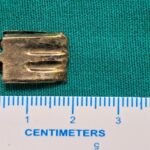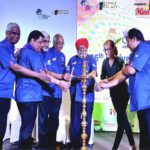“It is possible to save lives in instances of a witnessed cardiac arrest provided bystanders are trained in the technique”
New Delhi, February 26, 2018: Statistics indicate that in India, the deaths due to sudden cardiac arrest (SCA) are more than those from diabetes, road accidents, and dementia, combined. Many renowned personalities have passed away due to sudden cardiac arrest, former president, Dr APJ Abdul Kalam, and former union minister and TMC MP, Mr Sultan Ahmed. The most recent being actress Sridevi, who passed away on Saturday following a cardiac arrest.
A witnessed cardiac arrest is different from an unwitnessed event. The chances of survival are higher in a witnessed cardiac arrest if a hands-only CPR is done by the bystander within the first 10 minutes. There is no indication of a CPR being administered to the actress within the stipulated interval. In the case of Dr Kalam, apparently, the CPR was done after 7 minutes of his collapse. No such information is available for Mr Ahmed.
Speaking about this, Padma Shri Awardee Dr K K Aggarwal, President Heart Care Foundation of India (HCFI) and Immediate Past National President Indian Medical Association (IMA), said, “It is important for every single Indian national to be trained in the technique of hands-only CPR or compression-only CPR, as this can help in saving many lives. Apart from this, all public places and functions should be equipped with Automatic External Defibrillators (AEDs) for any such eventualities. There is also a need to equip every healthcare setting with conventional defibrillators.”
Untrained/trained lay rescuers should provide compression-only CPR, which entails compressing the chest at an adequate rate and depth, allowing complete chest recoil after each compression (avoid leaning on the chest between compressions), minimizing interruptions in compressions. For a trained lay rescuer, CPR entails adequate ventilation (rescue breaths) in addition to chest compressions for the adult in cardiac arrest.
Adding further, Dr Aggarwal, who is also the Vice President of CMAAO, said, “The premise of a successful CPR is earlier the better and longer the better. When you come across a victim of cardiac arrest, three simple rules must be followed: Call the ambulance, check if the person is breathing or has a pulse (if you can) and start chest compressions and continue till medical help arrives.”
Dr Aggarwal, as the president HCFI and an important representative of the medical community has also written to the Chief of the Film Certification Board requesting an accurate portrayal of CPR in Bollywood movies. A copy of the letter is enclosed.
Some characteristics of a high-quality CPR include:
- The recommended chest compression rate is 100-120/ min.
- The recommendation for chest compression depth for adults is at least 2 inches (5 cm) but not greater than 2.4 inches (6 cm).
- Chest compression should be started first before rescue breaths (C-A-B rather than A-B-C). The single rescuer should begin CPR with 30 chest compressions followed by 2 breaths.







